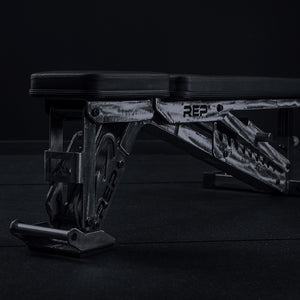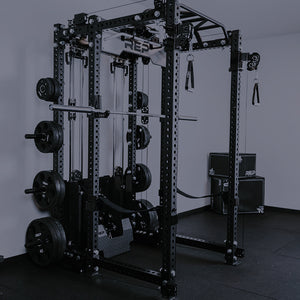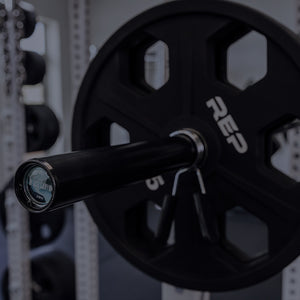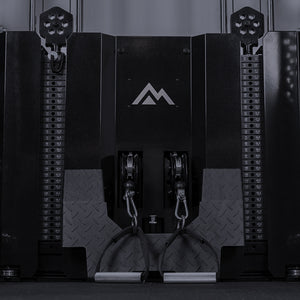
Get Smithy with it.
When it comes to building muscle, your exercise choices matter. The Smith machine row is one of our underrated favorites—here’s why, how to do it properly, and some pro tips to help you maximize your gains.
Meet The Expert
Jake Dickson holds a B.S. degree in Exercise Science and is a NASM-CPT. As a health & wellness writer, Jake focuses on making fitness practical and accessible for any audience. Off the clock, you can find Jake at the gym or unwinding by the beach.
What Is a Smith Machine Row?
The best part of building a back workout? Having so many exercise options, but that’s also the worst part. There are more row or pull-up variations out there than we can count.
If you need a row variation you can count on, you might want to head to the Smith machine. The Smith machine row, we think, is one of the most underrated back-builders out there.
In the next ten minutes, I’m going to sell you on why—and how to master the Smith machine row during your next back workout.
Smith Machine Row: Muscles Worked
Like any good back exercise, the Smith machine row engages multiple muscle groups in your posterior chain at the same time. Here’s a rundown:
-
Lats: Your latissimus dorsi, or lats, are the prime movers during most row variations. Your lats pull your arm back and into your sides.
-
Upper & Mid Traps: The trapezius muscles, which sit in your mid-upper back, retract and pinch your shoulder blades together at the end of each rep.
-
Arms & Forearms: Your biceps brachii, brachioradialis (which sits underneath), and the small muscles in your forearms work together to both hold the weight and bend your elbows while you row.
-
Lower Back: The erector spinae muscles which surround your lumbar spine contract isometrically, as in without moving, to keep your back rigid while you row the weight.
How To Do a Smith Machine Row: Step-by-Step
Compound exercises have a lot of moving parts. Literally—they involve motion at multiple joints (not muscles) simultaneously. This makes technique extra important. Here’s how to properly perform the Smith machine row.
-
Step 1: Set the bar into the safeties at around the height of your upper thigh.
-
Step 2: Stand close to the bar such that it’s directly above the middle of your shoes—there should be a slight gap between your thighs and the bar.
-
Step 3: Grab the bar with an overhand grip roughly shoulder-width apart or slightly narrower if you prefer.
-
Step 4: Take a breath, twist the bar to unhook it, then perform a hip hinge, pushing your butt backward and tipping over until the bar reaches around knee level.
-
Step 5: Lead with your elbows and row the bar until your upper arms are in line with your torso.
Good form checklist: Before you row, check to make sure you’re hitting the following beats:
-
Feet shoulder-width apart and toes pointing forward
-
Torso at a roughly 15-30 degree angle relative to the floor
-
Arms hanging straight, but not tense
-
Lower back flat and chest up
Benefits of the Smith Machine Row
What makes the Smith machine a go-to for rows? Safety, stability, and accessibility. Here’s why it belongs in your back workouts:
Easier On Your Back
The Smith machine row is generally easier on the back than free-weight (think barbells or dumbbells) strength training. Not only is the bar itself lighter than a standard barbell—usually 15 pounds, rather than 45—but the design of the machine itself takes some of the load off your lumbar spine.
Most people who perform barbell rows regularly would tell you that they’re hard on the posterior chain. There’s nothing wrong with that, but bent-over rows are not a lower back exercise. Your lumbar spine shouldn’t be the limiting factor.
A Great Teaching Tool
Rows are an intuitive motion, but folks commonly struggle to feel their backs working properly, especially if they’re new to strength training. The technique itself is also prone to error as some people swing the weight in an arc too much if they’re using a barbell.
The Smith machine quite literally puts your technique on rails. The station can help you learn the nuts and bolts of good form, which then transfers to other types of equipment down the line.
Grab-and-Go
Barbell rows are all well and good, but it’s not always easy to find an open squat rack in the gym. Most facilities contain multiple Smith machines, which are quicker to set up and utilize so you can spend less time waiting around and more time getting high-quality work in.
Smith Machine Row vs. Barbell Row
Almost all back workouts worth anything incorporate some form of bent-over row. The barbell is the most foundational piece of equipment you can use, sure, but is it the best?
In truth, the Smith machine row and barbell row are far more alike than they are different. However…
-
The Smith machine forces you to pull the bar straight up (usually; we’ll get to that). Rowing “high”, meaning pulling toward your sternum or nipple line, emphasizes your upper back.
-
On a barbell row, you typically pull in more of a natural arc, since the bar isn’t locked in place. With more of a tucked upper arm and a “low” row, toward your belly button, you’ll engage more lats.
You should also expect to have to pay more attention to your balance and bracing when using free weights. Smith machine exercises are more stable and convenient by contrast, but lacks a bit of real-world functionality.
Mistakes to Avoid on the Smith Machine
There’s a world of difference between a good Smith machine exercise and a bad one. Get it right and it’s one of the best tools you can use in the weight room—make too many of these mistakes and you might end up spinning your wheels.
-
Setting the bar too low: Don’t set the bar down at knee level. Unracking it when hinged over applies all the weight to your body immediately, which may cause a jolt of discomfort or screw up your posture.
-
Putting the safeties too high: Smith machines come with safety stops that prevent the bar from dropping lower than you’d like. Make sure these are set around shin height so they don’t cut off your range of motion at the bottom.
-
Pulling with your arms: Rows are for your back, not your arms. Be sure to focus on “pulling with your elbows” rather than your hands. Lifting straps can be an asset here.
Smith Machine Row: Variations & Modifications
Smith machine not moving the needle for you? No worries. We love the exercise, but it’s not the be-all, end-all of back training. Here are some similar options you can perform in a Smith machine to train your back:
Inverted Row
The inverted row is exactly what it sounds like. Think of it more like a horizontal pull-up—you lie on the floor under the bar and pull yourself up to it. Inverted rows are a great stepping stone if you’re working on your first pull-up, and are plenty customizable as well.
Smith Machine Upright Row
First things first; you may have heard that upright rows are bad for your rotator cuff. This is false, but you should still exercise caution if you’ve never done them before.
By standing erect and “rowing” the Smith machine bar upward toward your neck, you’ll work the muscles around your shoulder girdle and upper back, such as your traps, rhomboids, and rear deltoids.
Don’t expect to use the same amount of weight though—you have less leverage, so use a much lighter weight.
Smith Machine Single-Arm Row
It’s a bit clunky, but you can train your back unilaterally (that’s one side at a time) on the Smith machine as well. Stand sideways to the bar, hinge over normally, and row with the corresponding arm only. It’ll work in a pinch if you don’t have access to dumbbells.
Programming Tips
Here’s everything you need to know for programming the Smith machine row as part of your next back workout.
-
Intensity: The Smith machine makes it harder to use momentum to cheat your reps. As such, slow and controlled is the only way to go. You can train close to failure, but don’t load up more than 80-85% of your barbell row weight.
-
Volume: Try 3-4 sets of 6-10 reps.
-
Frequency: Incorporate two bent-over row variations on two different workout days. During the same workout, avoid redundancy—don’t do both barbell and Smith machine rows.
-
Timing: Since you aren’t using a barbell, you don’t need to worry as much about lower back fatigue. You can perform Smith machine rows at any point during your workout, but it’s best to do compound lifting early on.
Equipment & Setup Tips
The type of Smith machine you’re using makes a world of difference for rows.
Most Smith machines fix the bar on a vertical rail which moves straight up and down, but some are angled. If you have access to one, use an angled Smith machine. The slanted rail more closely mirrors the range of motion you’d use with a barbell or dumbbell.
-
Face the bar such that, when lowered, it moves away from you slightly. This angled path will encourage you to pull up and in, engaging your back as a whole.
-
If your Smith machine moves straight up and down, widen your grip, hinge over more so your torso is close to parallel to the floor, and pull high toward your sternum.
Maximizing gains means making the equipment you use work in your favor. Matching your row technique to the design of the Smith machine you have access to will enhance the value you get from it.
FAQs
Is the Smith machine good for rows?
In most cases, yes. If your Smith machine moves vertically, you might find rows awkward. In such cases, go for a wider grip, bend over more, and flare your elbows out. If your machine’s bar moves at an angle, stay a bit more upright and pull with a tucked arm toward your hip.
Why are Smith machine rows harder?
Some people struggle connecting with the Smith machine because our backs weren’t designed to pull in a straight line. The Smith machine works just fine on back day, but take some time to fiddle with your form until it clicks.
Are Smith machine rows safe for beginners?
Yes! In fact, the Smith machine is a spectacular tool for beginners because of the added safety and stability it provides.
Is the Smith machine row better than using free weights?
When it comes to muscle growth, everything is contextual. The Smith machine is rigid, but also provides more safety and is more convenient than free-weight rowing most of the time. However, free weights let you move smoothly in accordance with your individual bodily structure.
This article was reviewed by Ashley Boyer, ACE-CPT, for accuracy.
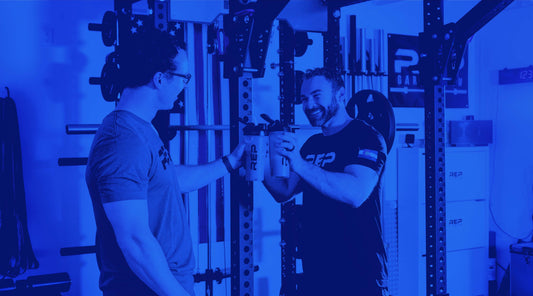
NEWSLETTER SIGNUP
Product launch information, promotions, blogs, and REP news.

